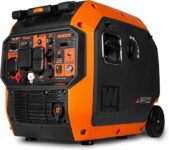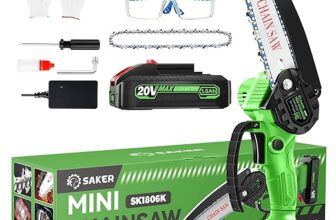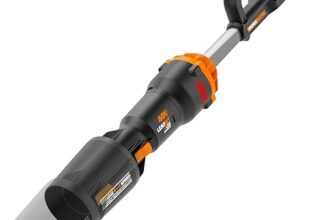
How to Use the Generator
Getting Started with Generators
Generators serve as a crucial backup power source during unexpected outages or outdoor adventures. Knowing How to Use the Generator safely and effectively is essential for maximizing its benefits. Many people rely on generators, but insufficient knowledge can lead to accidents or inefficiencies.
In this guide, readers will discover the various types of generators available, learn about essential safety precautions, and master the art of setting up and operating their generator smoothly. Knowledge of maintenance will ensure longevity and reliability, making it an indispensable part of their toolkit.
Whether it’s illuminating a home during a blackout or powering essential devices while camping, grasping these core concepts will empower users to take full advantage of their generators. With the right information, anyone can become comfortable and confident in utilizing this powerful tool.




Unlocking Power: Essential Guide to Mastering Generators
Understanding Generator Types
When it comes to generators, understanding the different types available can help users determine which model best fits their specific needs. There are three primary categories: portable generators, standby generators, and inverter generators. Each type offers unique features and advantages, catering to various power requirements and scenarios.
Portable Generators
Portable generators are lightweight and designed for ease of transport, making them ideal for outdoor activities like camping or tailgating, as well as for temporary power during outages. These generators typically run on gasoline and provide sufficient wattage for essential appliances or tools, ensuring that users can maintain comfort and productivity.
Key Features:
Example: The Honda EU2200i is a popular model, renowned for its quiet operation and reliability. With its 2,200 watts of power, it can run small appliances, tools, and even sensitive electronics.
Standby Generators
Standby generators, often referred to as whole-house generators, are permanently installed units that automatically kick in during a power outage. These generators run on natural gas or propane and are connected directly to the home’s electrical system, providing seamless power support for all appliances.
Key Features:
Example: The Generac Guardian Series is a standout option, providing powerful backup with options ranging from 7,500 to 22,000 watts, making it suitable for most residential needs.
Inverter Generators
Inverter generators are technology-driven and designed for efficiency and quieter operation. They convert raw power into a cleaner, more stable electricity output, making them suitable for powering sensitive electronics like laptops and mobile devices. Their compact size also enhances portability.
Key Features:
Example: The Yamaha EF2000iSv2 excels in this category, producing 2,000 watts while maintaining low noise levels and high fuel efficiency, making it ideal for camping or tailgating.
With a clear understanding of these generator types, users can look ahead to the essential safety precautions needed to ensure a secure and effective operation.
Safety Precautions Before Use
Safety is paramount when operating a generator. Taking necessary precautions before use can prevent accidents, injuries, and potential damage to the equipment. Below are key safety tips to keep in mind.
Ensure Proper Ventilation
Generators produce carbon monoxide (CO), a colorless and odorless gas that can be fatal when inhaled in large quantities. It’s crucial to operate generators outdoors and away from windows, doors, and vents to prevent CO from entering enclosed spaces. For added safety, consider installing a carbon monoxide detector in areas where the generator will be used.
Ground Your Generator
Grounding your generator is essential for preventing electrical shocks. Most models have a grounding terminal where you can connect a grounding rod or wire. Always check your owner’s manual for specific instructions regarding grounding. This not only protects you but also enhances the generator’s performance by stabilizing voltage output.
Handle Fuel with Care
Fueling a generator requires careful handling to avoid fire hazards. Always refuel your generator when it’s cool, and pay attention to sparks or flames nearby. Keep fuel containers stored in a cool, dry place, away from potential ignition sources. Moreover, be mindful of the proper fuel type required for your specific generator model—using the wrong fuel can cause damage.
Protect Against Overloading
Overloading a generator can lead to equipment failure or even fires. Before plugging in devices, verify the total wattage doesn’t exceed the generator’s capacity. Users should refer to the generator’s wattage rating or consult the owner’s manual for guidance on power management. Using power strips designed for generator use can also help with safe distribution.
Secure the Generator During Use
To prevent accidents or unauthorized access, it’s wise to keep the generator enclosed or blocked from reach, especially when used in high-traffic areas. Consider placing it on a stable surface to avoid tipping, and secure it against theft during use or transportation.
By adhering to these safety practices, users can operate their generators confidently, reducing the likelihood of accidents or injuries. The next section will guide users through the setup process, ensuring they understand how to prepare their generator for optimal performance in various situations.
Setting Up Your Generator
Setting up a generator properly is crucial for ensuring safe and efficient operation. From choosing the right location to connecting appliances, each step plays a pivotal role in the generator’s overall functionality. Here’s a handy guide to help users set up their generator like a pro.
Choose the Right Location
The placement of your generator is essential. Ideally, it should be set up outdoors, on a flat, dry surface. Here are some tips for selecting the perfect spot:
Prepare the Generator for Use
Before starting the generator, a few preparatory steps must be taken:
- Check the Oil and Fuel Levels: Consult the manual for the recommended oil type and fill the tank with the appropriate fuel. Most portable generators run on gasoline, while standby units typically utilize natural gas or propane.
- Inspect for Damage: Look for any visible signs of wear, tear, or leaks before starting the unit. Damaged machines can pose safety hazards.
- Read the Manual: Familiarize yourself with the specific model’s instructions to understand its features and performance limitations.
Using Appropriate Transfer Switches
For users looking to connect their generator to their home’s electrical system, using a transfer switch is imperative. These devices help prevent back-feeding into the grid, which can endanger utility workers and damage the generator. Here’s what to keep in mind:
Connect Your Appliances
Once the generator is ready, it’s time to connect appliances:
By following these steps, users can set up their generator efficiently, paving the way for smooth operation once it’s time to power up. As they move forward, they’ll learn how to operate their generator effectively, maximizing its capabilities in various situations.
Operating the Generator Effectively
This section dives into the operational aspects of running a generator. It discusses starting procedures, load management, and how to monitor running conditions to ensure efficient and safe operation.
Starting Procedures
Before starting a generator, it’s crucial to check that all preparations have been completed. A good starting procedure minimizes wear and maximizes performance. Here’s how to get it right:
- Fuel Start-Up: Ensure that the fuel tank is filled with the appropriate type of fuel, following the manufacturer’s guidelines. Most portable generators run on gasoline, while larger standby models may require propane or natural gas.
- Choke and Throttle Settings: For many generators, the choke should be set to “closed” for cold starts and then moved to “open” once the engine has warmed up. Make sure the throttle is set to the appropriate level—typically “Run” or “Idle” as stated in the manual.
- Pull Start or Engine Start: For portable generators, firmly pull the starter cord a few times until the engine starts. If it’s electric start, simply press the start button. Always keep a safe distance from the exhaust while doing this, as generators emit carbon monoxide.
Once the generator is running, allow it to stabilize for a minute before plugging in any appliances.
Load Management
Managing the load is critical to ensure that the generator runs efficiently without risking overload. Here are some tips to help with load management:
Monitoring Running Conditions
Keeping an eye on the generator’s operating conditions can prevent many issues. Here’s how to monitor effectively:
Operating a generator goes beyond simply turning it on. By following proper starting procedures, managing the load, and keeping an eye on running conditions, users ensure that their generator remains effective and safe to operate. Looking ahead, it’s equally important to focus on how to maintain your generator properly to prolong its lifespan and maintain performance.
Maintaining Your Generator
Regular maintenance is crucial for a generator’s longevity; it ensures that the unit functions effectively and safely throughout its lifespan. By investing a little time in routine checks and replacements, users can prevent larger problems that result in costly repairs. Below are essential maintenance tips that every generator owner should follow.
Oil Changes
Just like a vehicle, a generator relies on clean oil to maintain optimal performance. Over time, oil deteriorates as it collects impurities and degrades from heat. It’s essential to check the oil level regularly and change it according to the manufacturer’s recommendations—usually every 50 to 100 hours of operation.
Consider using high-quality oil, like the STP Premium Small Engine Oil, which is specially formulated to provide superior protection and efficiency.
Filter Replacements
Air and fuel filters also play a vital role in maintaining generator performance. Dirty filters can restrict airflow and decrease efficiency. Owners should check and replace filters every season or after a specified amount of use, depending on the model.
Fuel System Maintenance
Fuel quality can severely impact a generator’s performance. Stale fuel can cause starting issues and hinder the generator’s efficiency. Users should:
Seasonal Prep and Storage Precautions
If a generator will be idle for a season, it’s vital to prepare it for storage to ensure it remains in good working order:
- Clean the Generator: Remove dirt and debris that could hinder airflow and cause corrosion.
- Cover It: Invest in a weather-resistant cover to protect it from elements when not in use.
- Check the Battery: If your generator has a battery, maintain charge levels and clean terminals to avoid corrosion.
By incorporating these maintenance practices, users can extend the life of their generators and ensure optimal performance for years to come. Now that the generator is well-maintained, it’s time to leverage that care by mastering its usage effectively.
Mastering Generator Usage
In mastering generator usage, it is essential to remember the key points covered throughout this article. Understanding various generator types, adhering to safety precautions, and setting up correctly ensures safe and effective operation. By following the guidelines for operation and maintenance, users can enhance the longevity and performance of their generators.
Encouraging continuous learning and adhering to best practices is vital for anyone using a generator. By applying the knowledge gained, individuals can confidently harness the power of their generators while prioritizing safety. Empowered with this information, they can make informed decisions and maximize their generator’s potential for both recreational and emergency situations.










I’ve had my Jackery Explorer for camping trips and it’s been a lifesaver! Just bought the extension cord yo! 🚐 Any recommendations on maintenance for it?
Great choice with the Jackery! As for maintenance, make sure to keep it charged and store it in cooler temperatures.
I’d also recommend keeping it clean! Check for dust buildup, especially if you took it out camping!
Started reading this and wow, I had NO idea there were so many types of generators! 😲 The WEN 6800-Watt looks pretty solid for home use. Anyone here have experience with it? Would love to know if it’s good!
I’ve been using the WEN for about a year now — love it! Super easy to set up and pretty quiet too! Definitely worth the investment! 👍
Glad you found the types informative, Jessie! The WEN is a great choice for household use, especially if you’re looking for versatility!
I was a bit nervous to use a generator before reading this article. The safety tips are super helpful! Kinda funny when you think about it, but I feel like I can confidently set mine up now! 😂
Same! It sounds super complicated, but the step-by-step guide made it easier to understand.
That’s awesome to hear, Sarah! Safety first, right? It’s always best to be cautious when operating generators.
The article covers a lot of ground. I wish I had read this before buying a generator. Now I feel like I know less, lol. 😂 Guess it’s time to research the products in this list!
Been there! Don’t sweat it! Just take it one step at a time. The WEN and Jackery are both solid choices.
It can definitely feel overwhelming at first! Let us know if you have any questions about the products!
I laughed at that ‘mastering generator usage’ part, like am I supposed to hold classes or something? 😂 But jokes apart, I did gain some practical tips! Thanks!
Right? Like, my generator is just a hardworking machine, not a student! 😂
Haha! No classes needed, just take it one step at a time! Glad you found the tips useful.
This is a decent article but it could use a bit more on maintenance… how often should I really be changing the oil on my generator? Like, every month?
Exactly! If you’re using it heavily, then yes, every few weeks might be necessary. Just keep an eye on it!
Good question, Jeffrey! It usually depends on the usage, but generally, checking your oil every 50 hours is a good rule.
So glad I found a practical guide like this! The safety section had me a bit scared, but better safe than sorry, right? Scared to death of electrocution 😂
Absolutely, Chloe! Safety is crucial when dealing with electricity.
Safety first! I almost blew a fuse once because I didn’t follow precautions. Lesson learned. 😅
I thought generators were just for power outages, but this article opened my eyes to using one for camping as well! Might get the Jackery for it! Any other recommendations?
Definitely check out the MICRO-AIR Soft Start Kit if you’re using it with AC! Makes things sooo much easier!
Yes, the Jackery is perfect for camping! It’s lightweight and easy to use.
Finally set up my generator after reading this! The setup tips were game-changers. I used the transfer switch manual too—so helpful! 💡 Gonna test it out during our next storm!
That’s the spirit! Hope it works great for you; better to be prepared!
Awesome to hear that the tips were helpful for you, Brenda! Stay safe during those storms!